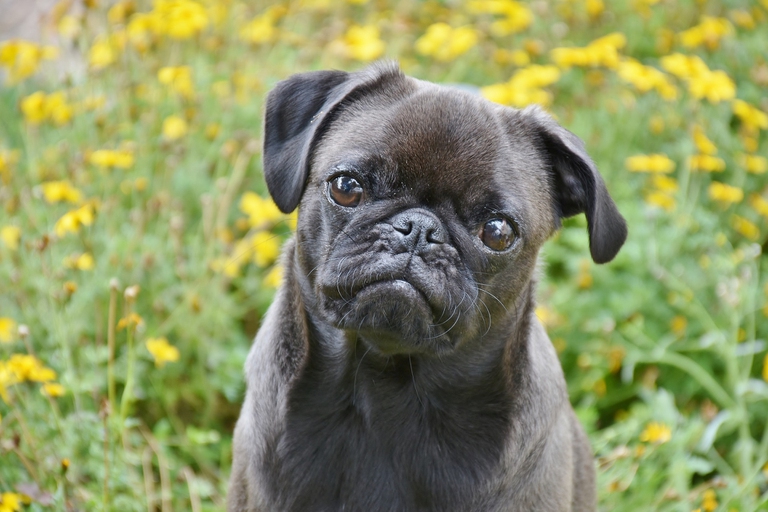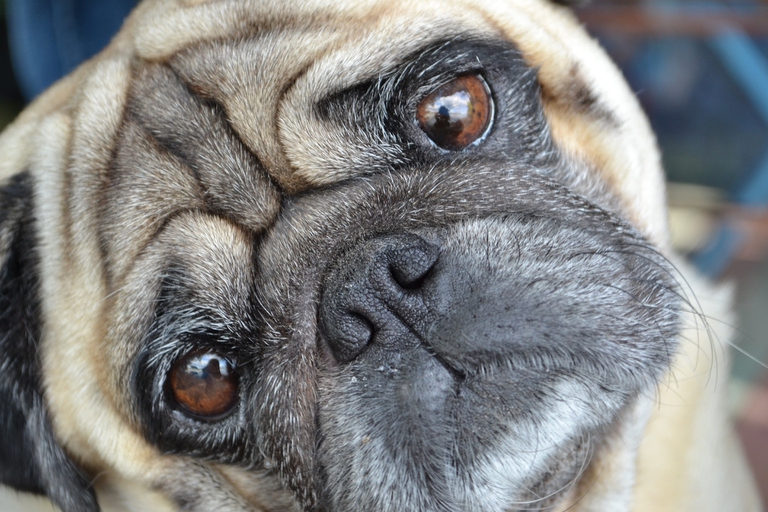https://www.lifegate.it/i-cani-brachicefali-soffrono-di-problemi-gastrointestinali
- |
- Brachycephalic dogs, characterized by a particular skull shape, are a creation of man through artificial selection.
- Canine brachycephaly brings with it many problems, including those related to the gastrointestinal system.
- In recent times, brachycephalic breeds are definitely in fashion, but the health of these dogs is often compromised.
There canine brachycephalya is a phenomenon created by man thanks to years of artificial selection more centered on the morphology than on the health and well-being of the subjects.The problem of dogs brachycephalic, in fact, is linked to the conformation of the skull, which is more flattened and square.Among the most common brachycephalic breeds we find the French bulldog, The bulldog, The pug, The boston terrier and the boxers.And, the first three listed are considered the most extreme regarding this morphological problem.There are various pathologies and physical disorders that brachycephaly can cause and, among all, that of brachycephaly stands out.gastrointestinal system which is particularly at risk in these dogs.In this regard, to find out more, we turned to an expert:there Dr. Chiara Dissegna, veterinary nutritionist who collaborates with the team of Nutravet, animal nutrition.

Brachycephalic dogs and health
The brachycephalic phenotype was probably, at least initially, sought because it was thought to be advantageous for dog fighting.Unfortunately, however, breeds of this type have now been selected for companionship thanks to their attractive appearance and are advertised and made increasingly popular by the mass media.The rounded skull, the broad forehead, the large and protruding eyes are in fact infantile characteristics, which trigger the same positive emotional response that puppies and children elicit in an adult man.

In these dogs the shortening of the muzzle can be extreme and accompanied by prognathism. These are skeletal changes that cause compression of the nasal and pharyngeal airways.The soft tissues of the respiratory tract (nasal mucosa, soft palate, tonsils and even tongue) do not reduce in proportion to the skeletal reduction of the muzzle and this leads to a narrower upper respiratory tract because it is occupied by soft tissues.
The main problem of brachycephalic breeds is the so-called BAOS (brachycephalic obstructive airway syndrome), characterized by respiratory and thermoregulatory problems of variable severity.The problem is diagnosed around 2-3 years of age, but it can also present itself in a severe form in puppies.Symptoms include inspiratory dyspnea, increased respiratory effort, chronic shortness of breath, exercise intolerance, and a tendency to overheat.This is a specific symptom that can progress to cause low oxygen levels in the blood resulting in collapse and even death.

Gastrointestinal problems in brachycephalic breeds
Unfortunately, the effects of BAOS also have repercussions ongastrointestinal system.In fact, chronic negative intrathoracic pressure, caused by the increase in inspiratory effort, is one of the main causes of gastroesophageal reflux.And, the inflammation of the esophagus, pharynx and larynx manifests itself with regurgitation, vomiting and ptyalism.There is generally a correlation between the severity of respiratory and gastrointestinal symptoms.
All this is accentuated by dental problems which are very frequent in brachycephalic breeds due to the shape of the mouth.In fact, chewing difficulties can cause early tooth decay, tartar and dental crowding.Furthermore, the protruding eyes that characterize these subjects can lead to eye problems 3 or 4 times more frequent than other dogs, with an increase of conjunctivitis And corneal ulcers.Additionally, excess skin around the nose and eyes creates wrinkles skin folds which can be the site of infections and dermatitis, often causing bad odor and necrosis phenomena.

Finally, we must not forget that brachycephalic dogs also suffer from reproductive problems.There dystocia, for example, that is, aabnormal fetal size or position which causes a difficult birth, and leads, in most cases, to a cesarean section.
Unfortunately there are many breeds of dogs and cats that man has selected by abnormally accentuating their morphological characteristics to the point of making them deformed.And, all of us who love animals, wonder at this point why the ban on cutting a dog's tail and ears has been placed, but the breeding and continuous selection of subjects whose morphology has a negative impact is tolerated. on health itself.
